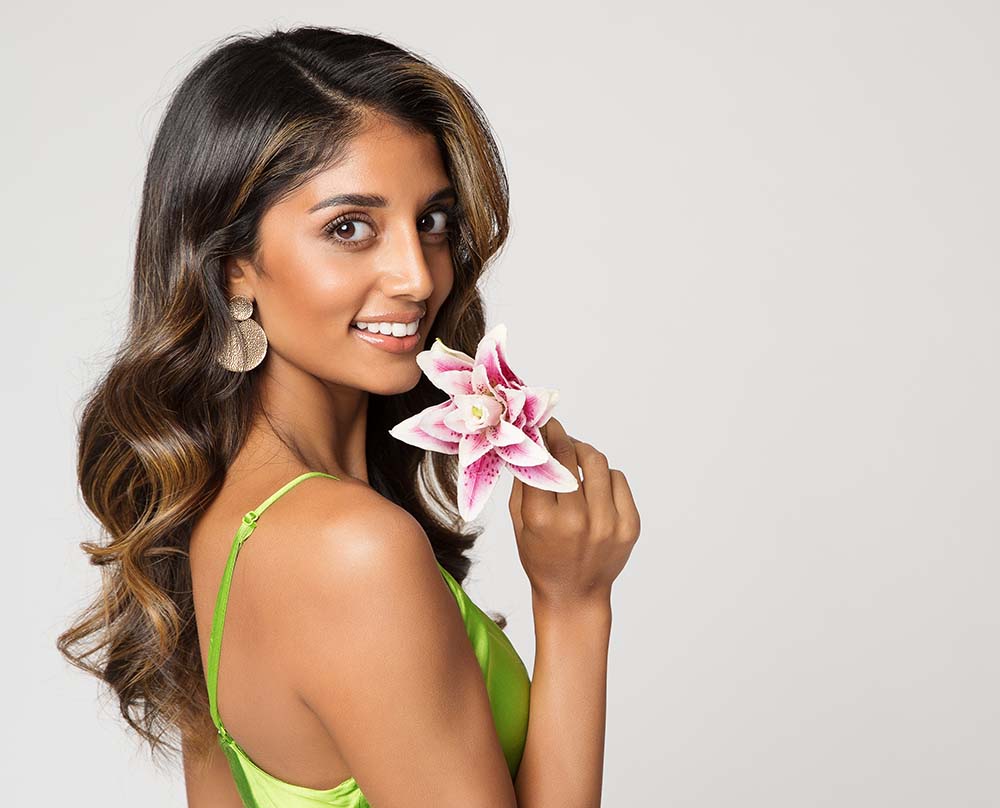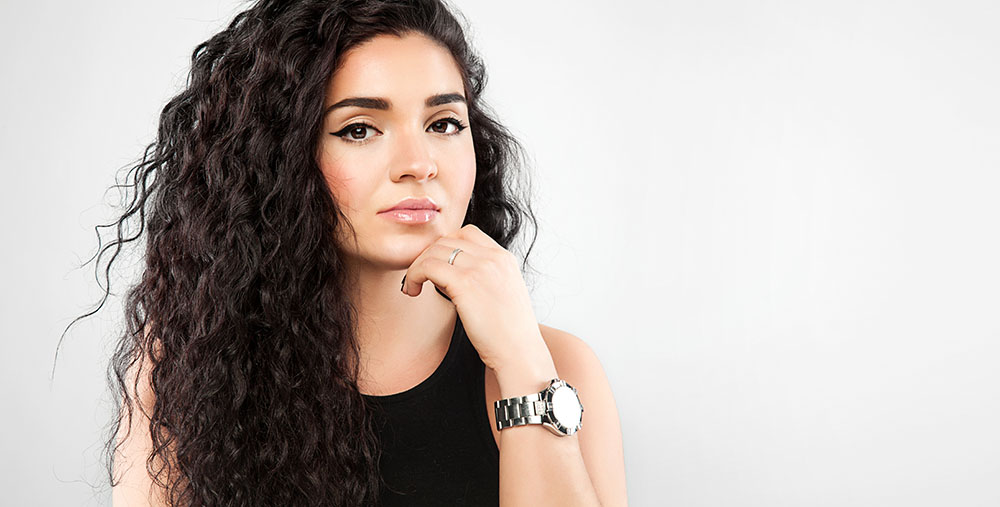Curls are a hairstyle, but they're also a type of hair. There are various ways to style your curls such as pin curls, barrel curls, and waves. Curly hair types are about three in number and all have their characteristics as well as their specific techniques to maintain them.
However, if you have naturally curly hair, can be difficult to manage. And if you want to curl your hair, choosing the right type of curl to suit you can be confusing, too. That's where this blog post comes in. Learn more about different types of curls, how these styles differ and how you can find yours.
Curly Hair vs Straight Hair
Curly hair types are characterised by frizz and usually require regular conditioning to prevent split ends. Although there are several types of curls, these tend to have a more rounded and less defined shape.
You can find people with curly hair from all ethnic backgrounds including African Americans, Hispanics, Caucasians and Asians. Natural curls can be loose, which are soft and fluffy at their edges, or tight, which are stiff and wound up.
How to Identify Your Curl Pattern?
Determining your curl pattern is key to finding the right hairstyle and texture for you. Although it's not always easy to identify your hair type, you can discover what you need with a good mirror and camera.
There are various ways to check your curl type, here are the four most common ways:
Use a Camera: Take pictures of your hair in different lighting conditions. Are they tight at the ends or wide? The sides of your hair usually provide the best reflection of the shape of your curl.
Use A Flat Iron: You can also give yourself quick flat ironing using a medium-sized flat iron with no temperature setting and no nozzle. This will flatten any loose curls out, showing off the shape of your natural curls.

Curly Hair Types
1. Wavy Hair
If you have wavy hair, it has some body and movement to it, with a loose curl pattern. It can range from loose ringlets that fall around the face and shoulders to long waves that can be worn either straight or curly.
You might wavy hair type if in the morning your locks are soft and silky but by midday or early evening, they're frizzy and coarse and tend tangle easily. Curls will range from small to large, with a gentle curve that is neither chaotic nor uniform.
A good way to define your wavy hair is to look for any signs of fading. Curls often shrivel as they age, becoming less defined and less curly over time. Avoid washing every day or over too many days, as this may lead to dryness and breakage.
You can find professional products designed specifically for wavy hair. After applying the product, leave it in your hair overnight or for two to three nights depending on the amount of moisture you want in your curls.
2. Curly Hair
Another type of curl is curly hair, which has more movement than the normal style and is often softer, thinner and fluffier than its straight counterpart.
Curly hair is usually a result of tight curls that are in constant motion and are easily tamed with the right styling product.
However, it is possible to have curly hair, even if you're not of African-American descent. Texture, thickness and body all play a role in determining your curl pattern, so don't be surprised if your curls are ever-changing, too.
Cowlicks can also occur in curly hair, which can make styling difficult and hair hard to control and handle. They may appear on any part of the head but especially around the front or at the crown.
A personalised treatment plan will help bring out your natural beauty while reducing frizz and damage. You need to find some great products designed specifically for curly hair.
3. Coily/Kinky Hair
Coily hair is also known as kinky hair. This type can be hard to manage and may require frequent trims. Kinky hair is usually curved, often in a tight spiral pattern and has a high number of treasured hairs that can break off easily if strong pressure is applied to it.
Coily hair may have more volume, especially during the winter months, because it grows more slowly than straight hair; however, the curl tends to fall out easily in the spring and summer months when it's washed more frequently.
You might have oily hair if your curls are very tight and not much movement is present. It will not have that fluffy bounce that wavy or curly hair have and may need regular trimming to keep it healthy.
4. Soft Curls and Ultra Curls
These are curly hair types characterised by their softness and clumping. They're also called "wash and go curls" because they just need to be washed, dried and styled for a completely different look every day.
5. Soft Curls
Soft to medium-sized curls are light to medium in weight with a somewhat rounded or irregular shape. These smooth, uniform curls have a regular or consistent pattern that's easy to maintain, which makes it the ideal hairstyle for women on the go. You can find great products designed specifically for soft curls here.
6. Ultra Curls
Ultra curly hair is coiled or very tightly curled with a high amount of body that may seem bigger than its actual size.

How to Take Care of Your Curly Hair?
Curly hair is beautiful, but it does require a bit more attention. Below are some tips for taking care of curly hair.
1. Use The Right Products for Your Hair Type
There is no one-size-fits-all product that will work for all curl types. Using the correct products will help nourish your hair while ensuring that no harmful chemicals are used in its maintenance.
A great way to get the right products is to try local beauty supply stores. It's best to have your stylist recommend a few different products made specifically for your curl type and texture.
2. Exfoliate Your Body Hair
Exfoliation is a key regimen for curly hair. It helps remove dead skin and softens the hair, making it easier to care for and style. Exfoliating the scalp will help reduce dryness, frizz and breakage.
3. Apply Moisturisers
Although you may not always need to apply lotion to your hair, you'll certainly need one during heat waves.
Tips for Styling Curly Hair
You can get good looking curls by following these tips:
● Pay attention to the way you wash your hair. Different washing techniques can lead to different curls. Use a clarifying shampoo and conditioner, then condition your hair with curly hair products and light oil, such as coconut or olive oil. You can find great products made specifically for curly hair here.
● Curly hair looks its best when it's kept clean and healthy, so using a leave-in conditioner is essential.
● You can use a wide-tooth comb or your fingers to gently detangle your hair.
● Use products that are sulfate-free because this is the main ingredient that will lead to frizzy hair and split ends. If you need to wash every day, try using a silicone-based shampoo and conditioner.
Conclusion
Curly hair is beautiful in all shapes, sizes and types. You must research to find the best way to take care of your hair and the products that are best suited for your unique needs. The key to healthy curly hair is proper maintenance.
FAQs
How can I make my curls look more defined?
The best thing you can do to define your curls is to comb them out thoroughly when wet with the help of a wide-tooth comb from root to tip. Also, detangle effectively with a wide-tooth comb before applying hair products.
What are the different types of curls?
There are three main types of curls: wavy, straight and curly, ranging in different textures and designs based on the size, shape and type of coils. These details are visible in all hair styles apart from ponytails or braids.